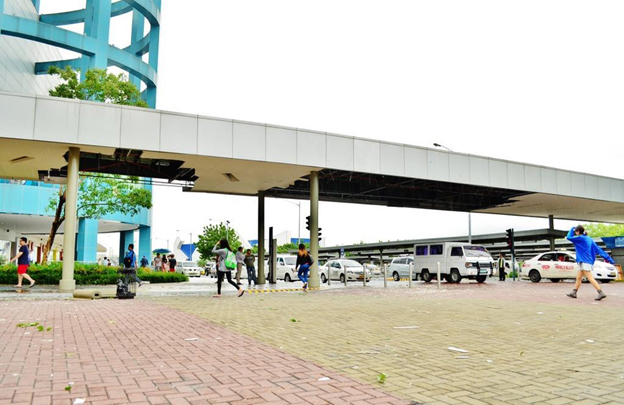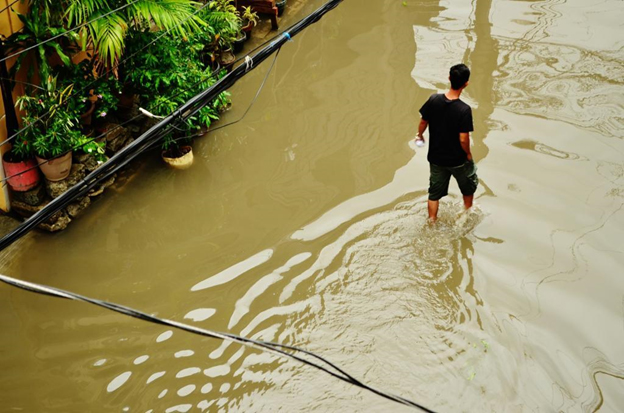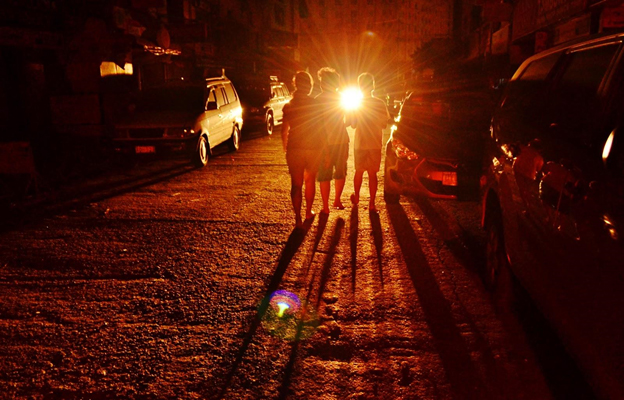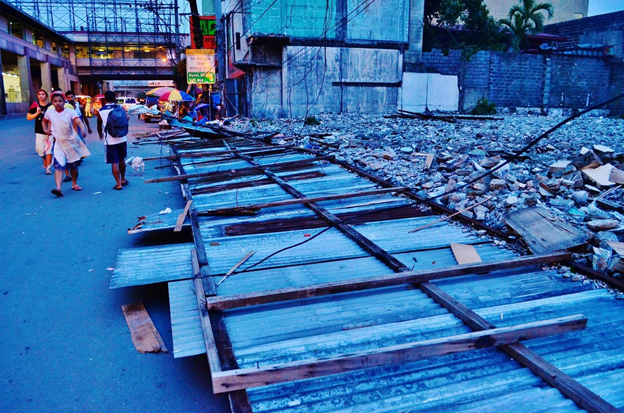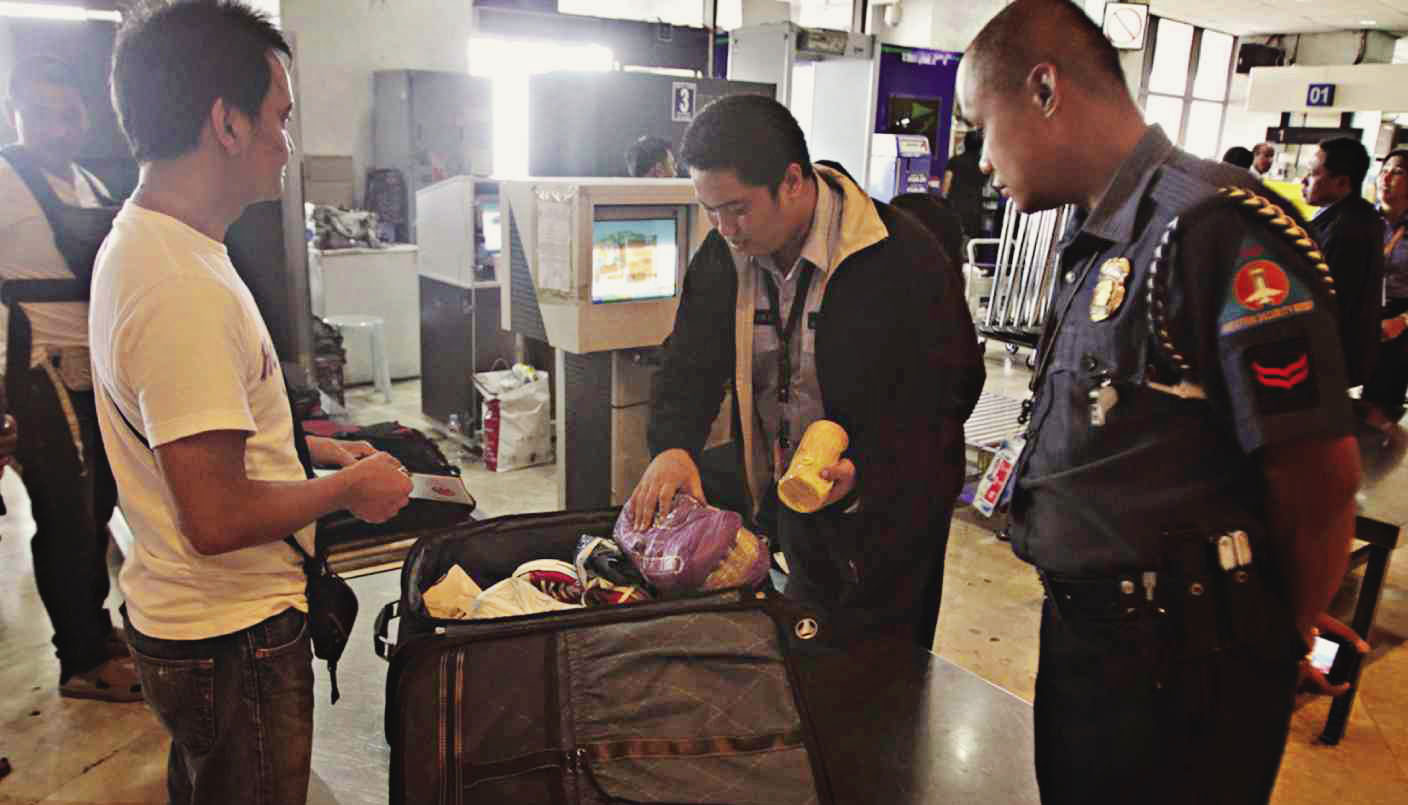BY THOMAS BENJAMIN ROCA
The Philippines has been spared a repeat of Typhoon Haiyan, the strongest ever to hit land, as this year’s Pacific storm season draws to a close.
Despite the relative calm, the National Disaster Risk Reduction and Management Council (NDRRMC) – the government agency tasked to deal with natural and man-made calamities – has had to contend with the double challenge of fast-tracking rehabilitation efforts in the Visayas, and minimizing the impact storms have on the country.
The NDRRMC faced intense criticism for the agency’s handling of Haiyan and its aftermath well into the first few months of 2014.
Indeed, criticism has so far been warranted: areas in the Visayas affected by Supertyphoon Yolanda have yet to recover one year after the catastrophe which affected 14.5 million people and left more than 6,300 dead, with around 1,000 missing.
Life is still a huge struggle for many survivors of Yolanda. An estimated four million people are still in need of permanent housing across central Philippines. Independent economic think-tank IBON Foundation reports that eight out of ten families in Yolanda-affected areas live on only P167 a day. A number of schools that were either rebuilt or repaired had reportedly sustained damage as a result of Supertyphoon Ruby in early December.
However, some progress has been made. A few days before the nation marked the first anniversary of the record-breaking supertyphoon, Communications Secretary Herminio Coloma Jr. said that almost a third of the 18,400 projects under the comprehensive Yolanda rehabilitation plan will have been implemented by the end of 2014.
First quarter storm
The country bears the brunt of most of the weather activity coming out of the southwestern Pacific, an area known as the Typhoon Belt due to the sheer number of storms generated by its warm waters.
A total of 30 weather systems of varying intensities formed over the Pacific Ocean in 2014, 19 of which entered the Philippine Area of Responsibility (PAR) as of Dec. 28.
Out of the 19 storms named this year by the Philippine Atmospheric Geophysical and Astronomical Services Administration (PAGASA), 13 had significantly affected parts of the Philippines.
Tropical Storm Lingling (PAGASA name: Agaton) was the first major natural disaster in the Philippines after Typhoon Haiyan. It hit the southern part of the country in January, and caused widespread landslide incidents and floods in Mindanao, resulting in 70 deaths and more than P566 million worth of damage.
Effects of Tropical Storm Lingling (Agaton) in the Philippines
| Casualties | |||
| Region | Dead | Injured | Missing |
| Zamboanga Peninsula (IX) | 11 | 2 | 1 |
| Northern Mindanao (X) | 11 | 17 | 2 |
| Davao Region (XI) | 24 | 38 | 2 |
| Caraga (XIII) | 34 | 29 | 4 |
| Total | 70 | 86 | 9 |
| Damages | ||
| Amount | ||
| in PH₱ | in US$ | |
| Agriculture | 293,090,423.23 | 6,450,990.00 |
| Infrastructure | 273,623,750.00 | 6,022,520.00 |
| Total damages | 566,714,173.23 | 12,473,500.00 |
SOURCE: Data gathered from the last update by the National Disaster Risk Reduction and Management Council (NDRRMC) as of Feb. 1, 2014.
The storm affected much of eastern Mindanao, the same areas hardest hit by Typhoon Bopha (PAGASA name: Supertyphoon Pablo) in December 2012. Bopha was the most destructive typhoon to hit the island in terms of casualties and property damage.
Agaton was followed by Basyang, which left at least six fatalities in its wake.
Midway through the year, Tropical Storm Mitag (PAGASA name: Ester) strengthened the southwest monsoon (Habagat) and brought heavy rains into the country. This prompted PAGASA to declare the start of the official rainy season on June 10, 2014.
Similar to Ester, Tropical Storm Hagibis also enhanced the southwest monsoon, which brought heavy rainfall and flooding to Central Mindanao. Hagibis, however, did not enter the PAR.
Third costliest typhoon
In July, Typhoon Rammasun (PAGASA name: Supertyphoon Glenda) threatened much of Luzon, including Metro Manila. According to the United States’ Joint Typhoon Warning Center, Rammasun was the first storm of typhoon strength to impact the Philippines after eight months, the previous being Typhoon Haiyan.
The approach of the storm, which was reportedly capable of generating storm surges of up to three meters, prompted evacuations in the Bicol and Southern Tagalog regions.
At least 90 percent of Metro Manila residents lost power, as poles were toppled and lines downed. Much of the National Capital Region and neighboring provinces were completely shut down due to the power outage.
Supertyphoon Glenda was the first serious test for the government’s disaster response mechanisms after Yolanda. Despite massive evacuations in affected provinces, the storm left a total of 106 fatalities in its wake, with five people reported missing. Region IV-A, the country’s industrial heartland, reported the highest number of casualties, with 74 dead, three missing, and 674 injured.
Glenda is the third costliest tropical cyclone in Philippine history, as it caused substantial damage to agriculture and infrastructure in the Bicol and Southern Tagalog regions, as well as paralyzed economic and industrial activity in the greater Manila area. The storm’s name has been retired by PAGASA.
Effects of Typhoon Rammasun (Glenda) in the Philippines
| Casualties | |||
| Region | Dead | Injured | Missing |
| Metro Manila (NCR) | 2 | 25 | 0 |
| Ilocos Region (I) | 0 | 2 | 0 |
| Central Luzon (III) | 8 | 127 | 0 |
| CALABARZON (IV-A) | 74 | 674 | 3 |
| MIMAROPA (IV-B) | 7 | 7 | 0 |
| Bicol Region (V) | 7 | 271 | 0 |
| Western Visayas (VI) | 1 | 0 | 0 |
| Eastern Visayas (VIII) | 7 | 151 | 2 |
| PH Total | 106 | 1,250 | 5 |
| Damages | ||
| Amount | ||
| in PH₱ | in US$ | |
| Infrastructure | 4,565,512,674.94 | 102,998,000.00 |
| Agriculture | 33,803,690,268.00 | 762,614,000.00 |
| Total | 38,616,610,414.94 | 871,194,000.00 |
SOURCE: Data gathered from the last update by National Disaster Risk Reduction and Management Council (NDRRMC) as of Sept. 16, 2014.
Costliest Philippine typhoons
| Rank | Name | Year | PH₱ | in US$ |
| 1 | Haiyan (Yolanda) | 2013 | 89.6 billion | 2.02 billion |
| 2 | Bopha (Pablo) | 2012 | 42.2 billion | 1.04 billion |
| 3 | Rammasun (Glenda) | 2014 | 38.6 billion | 871 million |
| 4 | Parma (Pepeng) | 2009 | 27.3 billion | 608 million |
| 5 | Nesat (Pedring) | 2011 | 15 billion | 333 million |
| 6 | Fengshen (Frank) | 2008 | 13.5 billion | 301 million |
| 7 | Megi (Juan) | 2010 | 11 billion | 255 million |
| 8 | Ketsana (Ondoy) | 2009 | 11 billion | 244 million |
| 9 | Mike (Ruping) | 1990 | 10.8 billion | 241 million |
| 10 | Angela (Rosing) | 1995 | 10.8 billion | 241 million |
Sources
- Destructive Typhoons from 1970 until 2003 by NDRRMC.
- Situation Report No. 50 of the Effects of TS Ondoy and TY Pepeng by NDRRMC.
- Situation Report No. 27 of the Effects of TS Juan by NDRRMC.
- Situation Report No. 38 of the Effects of TY Pablo by the NDRRMC.
- NDRRMC Updates re Effects of TY YOLANDA (HAIYAN)
- NDRRMC FINAL REPORT re Effects of Typhoon “GLENDA” (RAMMASUN)
Floods in Northern Luzon
Typhoon Halong (PAGASA name: Typhoon Jose) hit the Philippines in early August. Enhanced monsoon rains brought on by Typhoon Jose caused flooding, resulting in at least two deaths and P1.6 million in damages in Pangasinan province.
In early September, Typhoon Kalmaegi (PAGASA name: Luis) caused flash floods in Pangasinan, especially in the towns of Calasiao, Santa Barbara and Urdaneta City. The storm also caused landslides and substantial agricultural damage in the Cagayan Valley region.
At least 12 were killed by the storm, eight of whom drowned when the boat they were riding sank due to rough seas. Damages were reportedly valued at $18.3 million as of Sept. 19.
Ondoy redux
Tropical Storm Fung-wong (PAGASA name: Mario) enhanced the southwest monsoon which triggered severe flooding across much of Luzon and Visayas.
The arrival of Tropical Storm Mario also marked the fifth year anniversary of Typhoon Ketsana (PAGASA name: Ondoy) devastating the Philippines.
As the storm approached Metro Manila, PAGASA warned of extreme rainfall over the metropolis and surrounding provinces. The agency reported 268 millimeters of rain recorded in the Science Garden in Quezon City within a six-hour period.
The severe rains affected flight operations in Ninoy Aquino and Clark International Airports, while about three percent of Meralco customers experienced power outages. Several areas had been flooded as high as ten feet. Some communications in those areas also went down. Flood-prone Marikina City and Cainta were placed under states of calamity.
Effects of Tropical Storm Fung-wong (Mario) in the Philippines
| Casualties | |||
| Region | Dead | Injured | Missing |
| Metro Manila (NCR) | 7 | 5 | 0 |
| Cordillera Administrative Region (CAR) | 0 | 4 | 2 |
| Ilocos Region (I) | 4 | 4 | 1 |
| CALABARZON (IV-A) | 4 | 2 | 1 |
| MIMAROPA (IV-B) | 1 | 1 | 0 |
| Bicol Region (V) | 2 | 0 | 0 |
| Total | 18 | 16 | 4 |
| Damages | ||
| Amount | ||
| in PH₱ | in US$ | |
| Infrastructure | 585,357,721.02 | 12,987,500.00 |
| Agriculture | 2,814,066,471.49 | 62,436,300.00 |
| Total | 3,399,424,192.51 | 75,423,800.00 |
SOURCE: Data gathered from the last update by National Disaster Risk Reduction and Management Council (NDRRMC) as of Sept. 30, 2014.
Lessons from Yolanda
Typhoon Hagupit (PAGASA name: Supertyphoon Ruby) entered the PAR late on Dec. 3, and was simultaneously upgraded to a Category 5 super typhoon – the same designation of Supertyphoon Yolanda as it entered the PAR.
Despite a wide variation in paths reported by different meteorological agencies and news outlets, it was generally believed Supertyphoon Ruby would follow the same path Yolanda took through much of the Visayas.
The slow-moving typhoon prompted authorities to put in place preparations in Northern Mindanao, Visayas and Southern Luzon. Around half a million people – one of the largest peacetime evacuations ever mounted according to the United Nations – were evacuated from flood- and storm surge-prone areas, especially in Eastern Visayas, Bicol and Southern Tagalog regions. It weakened to a Category 3 typhoon before making landfall over Dolores, Eastern Samar on Dec. 6.
As of Dec. 12, at least 18 people had been confirmed dead by the typhoon, leaving nearly 916 injured according to the NDRRMC.
Supertyphoon Ruby was the Philippines’ second most expensive disaster for 2014, after Supertyphoon Glenda. Despite this, there were relatively fewer casualties caused by Ruby compared to Glenda. The nation was able to prevent a repeat of the massive loss of life in the wake of Supertyphoon Yolanda.
Effects of Typhoon Hagupit (Ruby) in the Philippines
| Casualties | |||
| Region | Dead | Injured | Missing |
| CALABARZON (I-A) | 1 | 16 | 0 |
| MIMAROPA (IV-B) | 1 | 11 | 0 |
| Bicol Region (V) | 0 | 12 | 0 |
| Western Visayas (VI) | 0 | 17 | 0 |
| Central Visayas (VII) | 1 | 5 | 0 |
| Eastern Visayas (VIII) | 15 | 855 | 0 |
| Total | 18 | 916 | 0 |
| Damages | ||
| Amount | ||
| in PH₱ | in US$ | |
| Infrastructure | 1,435,804,523.00 | 32,038,300.00 |
| Agriculture | 3,654,460,903.00 | 81,544,900.00 |
| Total damages | 5,090,265,426.00 | 113,583,200.00 |
SOURCE: Data gathered from the last update by National Disaster Risk Reduction and Management Council (NDRRMC) as of Dec. 19, 2014.
This may be attributed to the large-scale forced evacuations executed by local government units in areas affected by the storm, as well as wider public awareness of the dangers posed by storm surges on coastal communities.
Work in progress
It goes without saying that the Philippines is a disaster-prone country. The last decade has seen eight of the worst storms to ever hit the country, hinting at the occurrence of supertyphoons becoming less of a trend and more of an established – and terrifying – new reality. The lack of a global consensus on the validity of climate change seems more and more irrelevant in the face of the experiences of poor countries like ours, who now have to settle into a rapidly-approaching future of destructive weather.
The only real chance for the Philippines to continue surviving and eventually overcome this new reality of super storms is to empower its people with scientific knowledge, a vital component of disaster risk reduction and management.
A country that experiences an average of 20 typhoons per year clearly has to invest in meteorology: build its arsenal of weather-reading and hydrological equipment, and encourage endeavors like flood mapping database Project NOAH; increase funding for state schools that offer degrees in meteorology; and mainstream weather and flood knowledge in the media and in schools.
Lessons have certainly been learned from the massive tragedies of past year – lessons that have fortunately saved hundreds of lives during this year’s typhoon season. But educating, and indeed building, a disaster-resilient nation will be a work in progress for much of the foreseeable future.–with reports from Verlie Retulin
